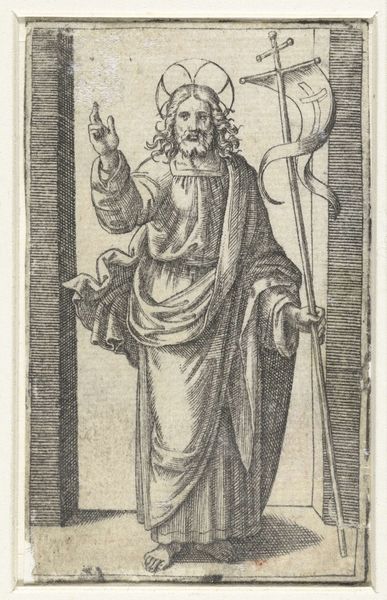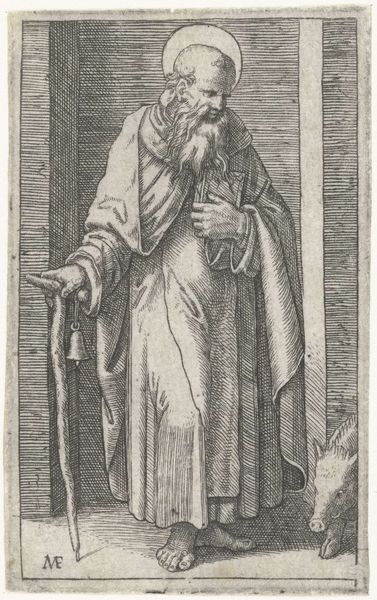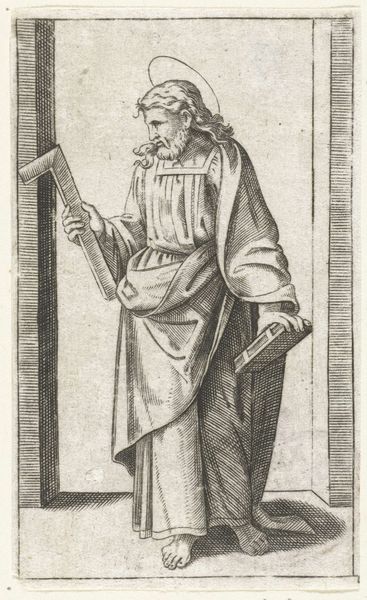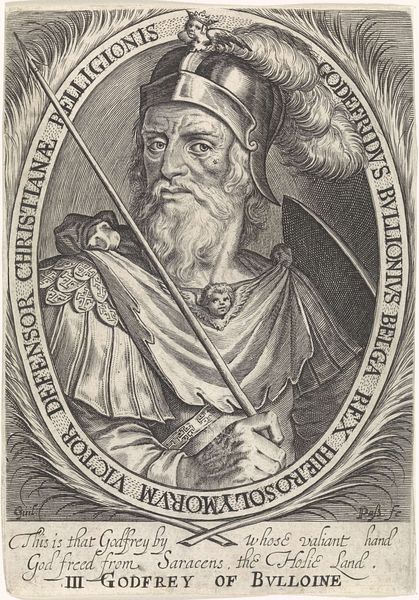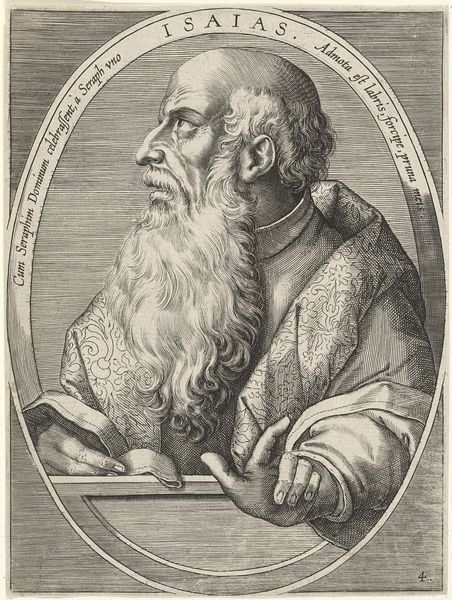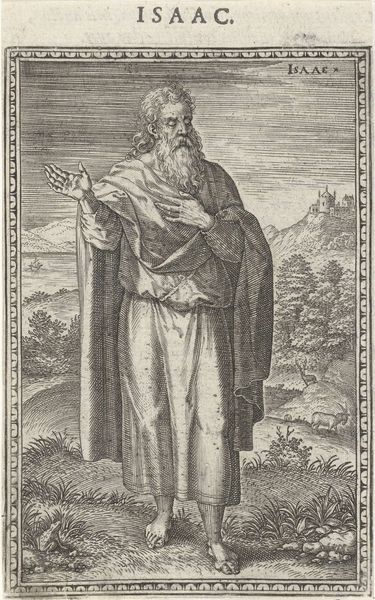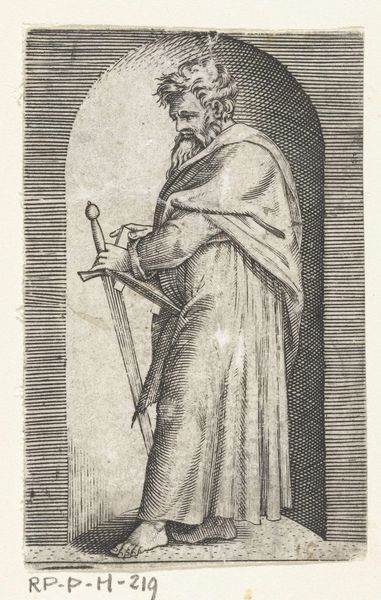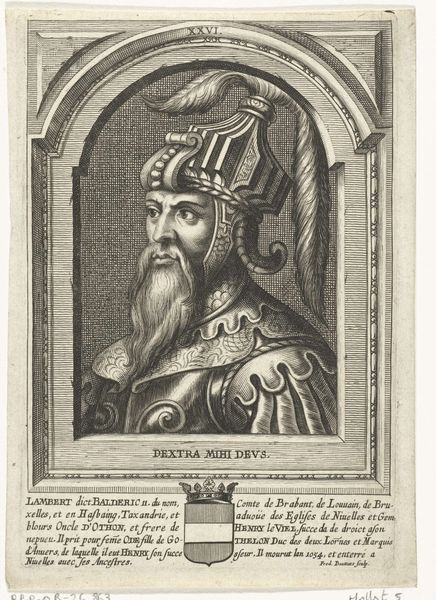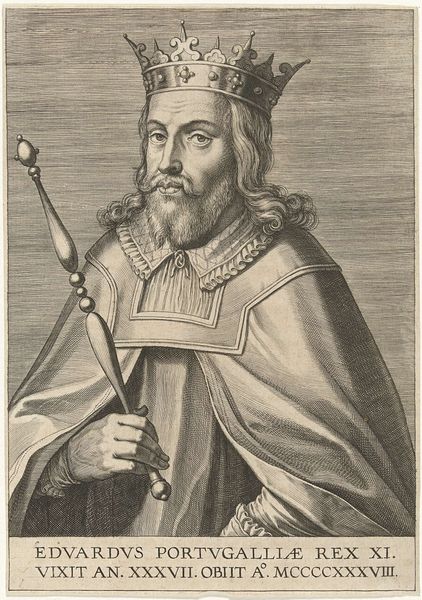
print, engraving
#
portrait
#
baroque
# print
#
old engraving style
#
figuration
#
line
#
history-painting
#
academic-art
#
engraving
Dimensions: height 254 mm, width 136 mm
Copyright: Rijks Museum: Open Domain
Editor: This is "Portret van paus Urbanus VIII" by Pieter de Bailliu, a print dating sometime between 1623 and 1660, currently at the Rijksmuseum. I'm immediately struck by how formal and imposing it is. How do you interpret the symbolism in this piece? Curator: Indeed. Let’s consider what it visually communicates. The rigid lines of the engraving emphasize formality, yes, but also the unwavering dogma represented by the papacy. Notice how Urbanus VIII is framed – enthroned and holding a papal cross. These are more than decorative; they are charged icons of power and divine authority. What do you notice about his hand gesture? Editor: It’s raised as if he's giving a blessing. Is there a specific significance to that gesture in this context? Curator: Absolutely. It signifies not just a blessing but also authority – a pronouncement ex cathedra. In an era grappling with religious reformation, such symbolism became crucial. His portrait aims to reaffirm and consolidate the Vatican’s spiritual and temporal dominion. Also, consider the Baroque love of elaborate ornamentation—how does that apply here? Editor: I see that it extends beyond his garments and into the throne itself. It speaks to wealth and grandeur, but almost… theatrical, meant to inspire awe. Curator: Precisely. It's a calculated performance. It's interesting to consider how cultural memory gets encoded and transmitted through such carefully constructed images, even today. Editor: I hadn't considered how much deliberate visual communication was at play, going beyond simply representing a person. Curator: Portraits like these are historical documents, revealing not only a likeness but also the complex ideologies and power dynamics of their time. Every line, every symbol serves a purpose.
Comments
No comments
Be the first to comment and join the conversation on the ultimate creative platform.

